Unusual DIY materials. Dentistry + electronics =? Part 1
There is nothing more beautiful than sitting in a lab and stroking a fat bald rat looking for inspiration.
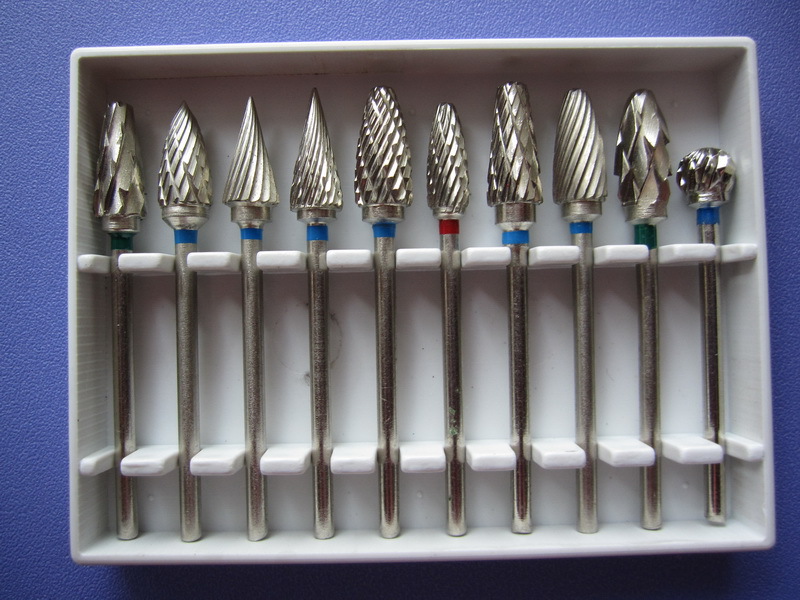
So, today we will have a little unusual DIY post. We will not do anything with our hands. Arduino and firmware in 30 lines on Brainfuck also will not. We will try to look at familiar things from an unusual angle.
All of us are accustomed to materials, classical for this area, like PCB, tin solder and other joys of those wholike to use a jigsaw to brush off the boards. In this article we will try to find interesting alternatives to familiar process technology in a somewhat unusual area - dentistry. Dental technicians and dentists work with a whole bunch of polymers, composites and much more. I will not give specific recipes for use, but just give the general direction for independent experiments.
')
In today's program:
Materials
In the next part:
Materials
Equipment and tools
Disclaimer: I do not promote anyone's interests and all of the references to dental stores are chosen by the Korean random order for illustrative purposes.
To begin, let's determine what materials we are interested in and how to get them.
First, the materials vary greatly in price. There are a bucket of some rubbish like Unifas-cement for 80 rubles. There are 7,000 per 2 ml of a particularly tricky adhesive. We are interested in low-budget options, although perhaps someone will find a use for more expensive things.
Secondly, the places of sale are not at all obvious. The same principle works here as in the furniture for professional furniture makers, specialized stores of ossums and the like. Such stores do not spend money on a beautiful shop window and usually nest in the city’s hives among the hundreds of Vector Plus, due to cheap rentals. A typical example in Krasnodar:
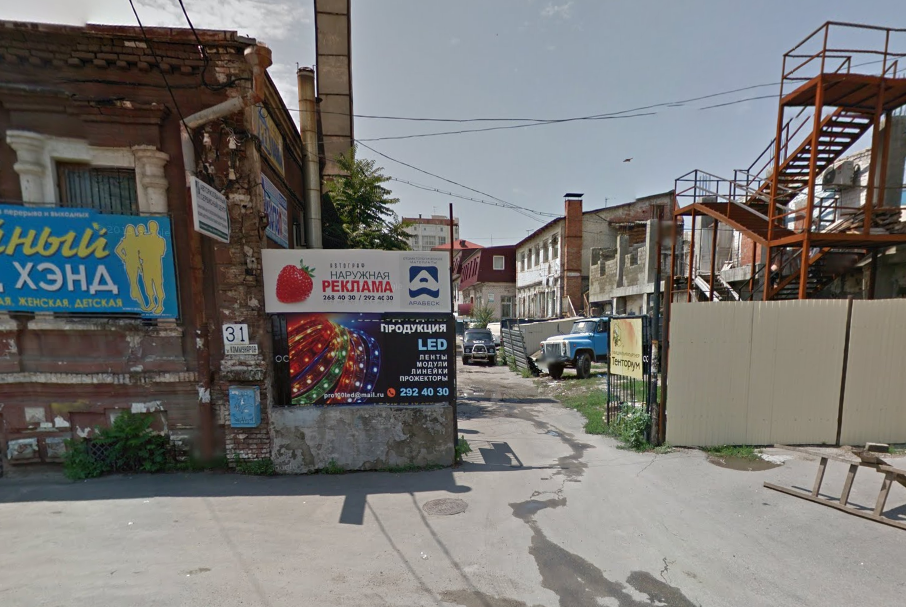
Immediately the question arises, how to find these camouflaged shelters with cunning materials? The answer is pretty obvious. 2GIS is our best assistant in this situation. Taking this opportunity, I want to convey a huge thank you to the staff of pilikoff , jetfreeman and the rest. Dentists themselves do not have time to follow the endless movements of these stores. Take, for example, Moscow, as one of the most relevant to the audience. The correct query is "dental materials"

It is especially convenient to do this directly from the phone, combining the search with a call for the presence of positions of interest. Now we can go directly to the materials.
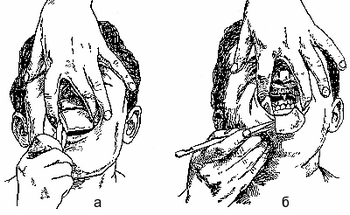
Dentists often take impressions. Once this was done with gypsum, which is fragile and, in principle, cannot be removed by a single piece from the oral cavity. It was then necessary to glue the imprint and several pieces. Moreover, the impression was also heated in the process of crystallization ... Also, a pleasant bonus was the ability to leave a part of the teeth directly in the impression. Today everything has changed and the main working materials for the doctor - alginate masses and C- and A-silicones.
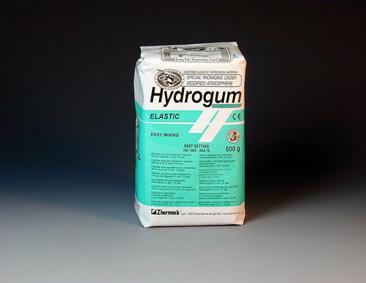
Alginates are good for their very low price. For example, Hydrogum Soft costs about 200 rubles for a half-kilogram package. Sold in the form of colored powder and mixed in distilled (preferably) water.
Very important! Always read the instructions carefully. The manufacturer is not in vain gives accurate proportions by weight and volume. It is also very important to maintain the time norms for kneading and forming an impression. More expensive alginates are color-cured polymerization and mixing quality. They change color depending on their condition, for example, from purple to yellow. Alginates have one big minus - they give a wild shrinkage after 2-3 hours after creating an impression. In a day you will not recognize the model. Therefore, it is necessary to cast immediately.
Dry powder of alginic acid is potentially harmful to health. Avoid spraying or inhalation.
To work with alginates you will need several things:
Rubber bulb

It should be no more than 50 rubles. It is also very convenient to mix plaster.
Putty knife
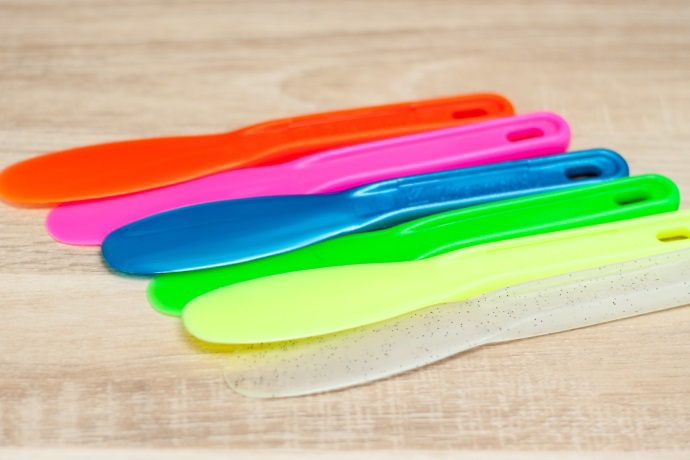
It can also be metallic.
Optional - scales or measuring spoon
Not all alginate masses put measured containers, but I highly advise not to do kneading “by eye”.
Work process:
Measure out the right amount of powder and pour it into the flask. Then add the required amount of cold water. Start stirring with a spatula. When the mass becomes homogeneous it can be applied to the surface. In the case of dentistry, this is an impression spoon for the oral cavity, in our case, you will need to come up with something depending on the goals. Finally, a little jerky video, which shows a semi-automatic mixing system.
Much more interesting materials, but also cost significantly more. However, among them there are some low-cost representatives. A-silicones shrink less and improve relief accuracy. C-silicones are simpler, but also cheaper. Consider one of these budgetary representatives with a price in the region of 1,300 rubles - Zetaplus from Zhermack.
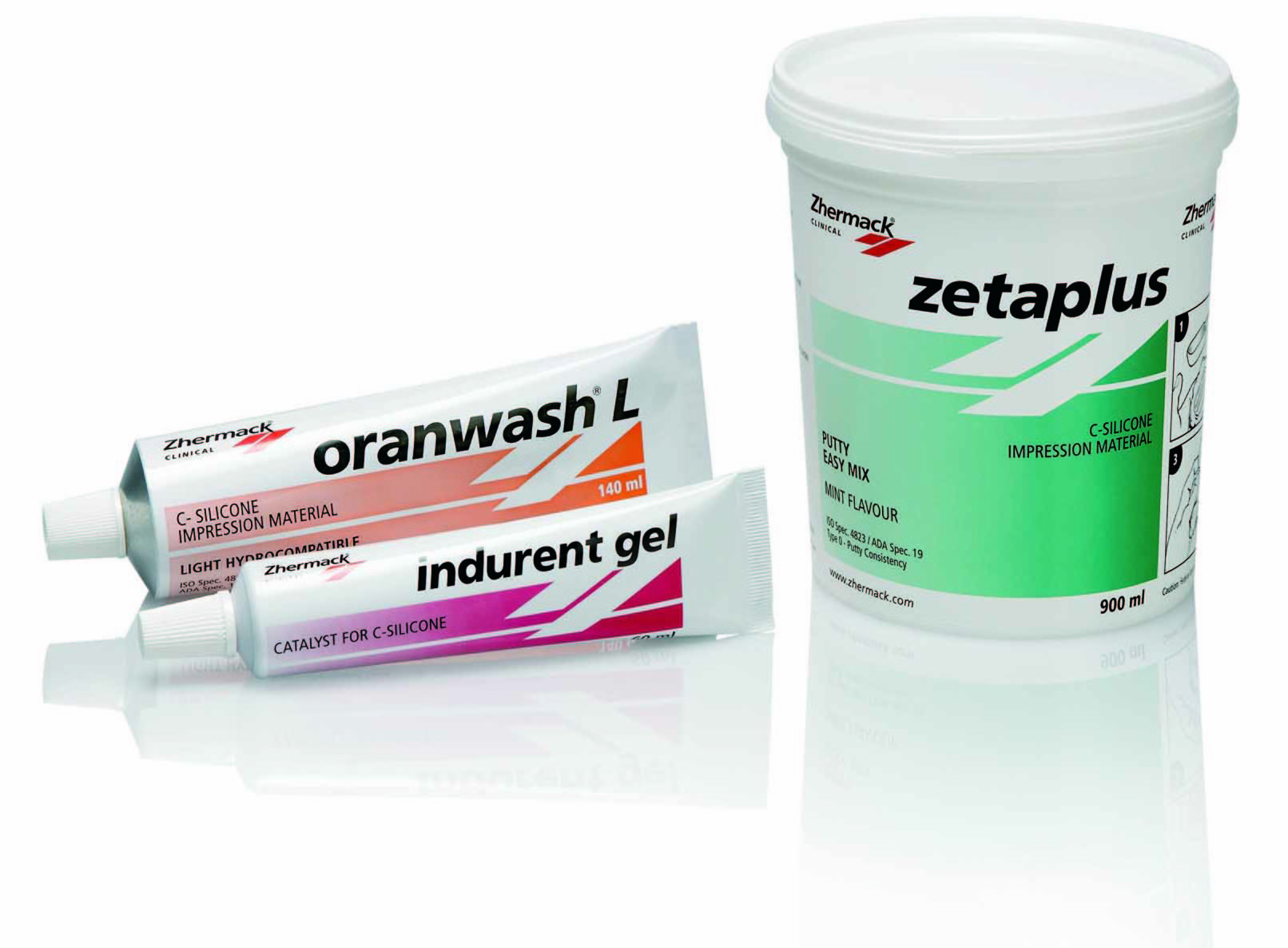
As you can see in the picture, the basic set consists of three components. This is the base material in a large bucket (often called Putty), flowing silicone in a tube labeled Oranwash L (also often called soft or light) and a tube of catalyst. The basic principle of working with silicones is to create two-component prints. The first layer of the impression is removed by a viscous base mass, then the second - by a corrective fluid mass, which gives a particularly accurate display of details. Consider in practice:
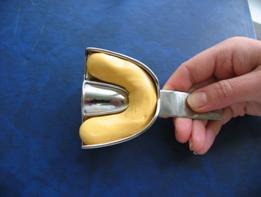
First, knead the base mass with the right amount of catalyst. Place our plasticine mass in the impression tray or its analog and press it to the removed part.

We are trying on a cast of something from which we remove it, most likely it will not sit down, as there are undercuts, we cut away what prevents the cast from sitting down This space will be filled with liquid silicone.

Fill liquid silicone mixed with catalyst into the processed cast and press it again to the part, carefully squeezing out the mass. Important! This blue rubbish categorically does not wash off. Liquid silicone soaks the fabric and then hardens forever with a hydrophobic stain.
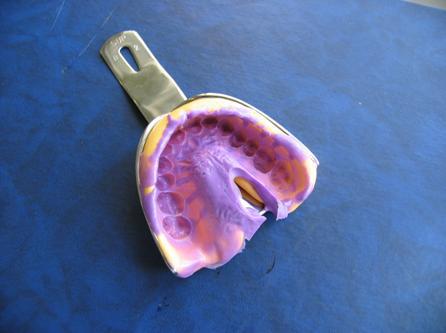
We get an accurate print of the model to be removed.
From other silicones, you can also pay attention to Speedex . It is also inexpensive. In addition to the direct destination for prints, silicones can be used as sealants, as well as to create any temporary structures. I very often make of it a sealing-retaining stand for laboratory equipment. Shrinkage is not as severe as alginates. It is believed that the cast can be cast during the day with preservation of accuracy. For various kinds of temporary structures, the lifespan is almost unlimited.

Supergips are distinguished by the usual construction alabaster of increased purity, uniform particle size and sly additives that reduce the coefficient of expansion. The strength of the final product is also higher. Prices for it from 500 rubles. Gypsum material is very capricious and the creation of high-quality models from it requires a fair amount of training.
Classification:
Class I is rare filth and is not used by normal laboratories.
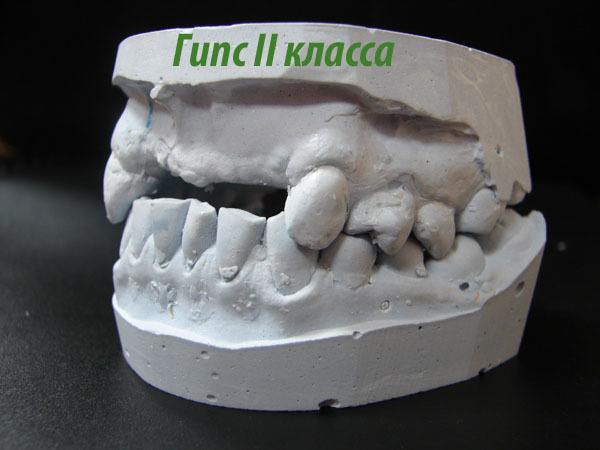
Class II - in dentistry, it is mainly used for gypsum models in an occluder or articulator, and putting in a cuvette for cooking. Strength is low.
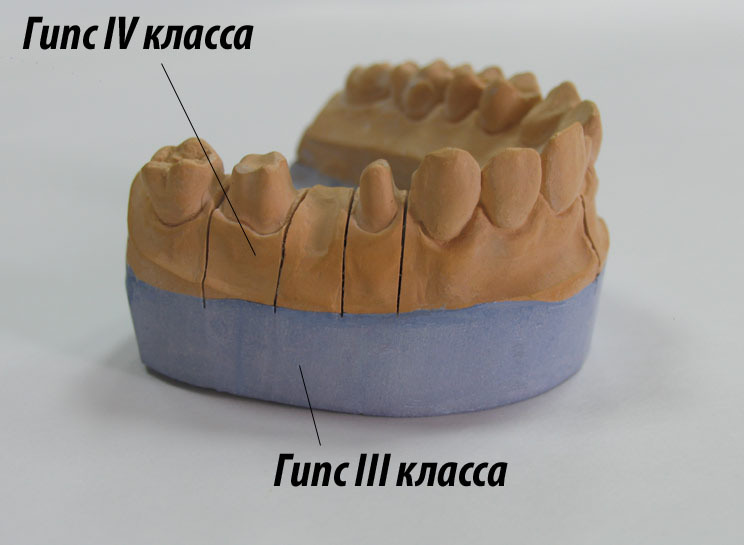
Class III - one of the most popular in dental laboratories. Almost all models of jaws flow from it for various works, with the exception of collapsible models. This dental plaster is strong enough not to break when removing the model from the cast. Universal gypsum, a kind of golden mean between price, quality and durability.
Class IV - heavy-duty gypsum, which is almost impossible to process without the use of high-speed tools. Use it for casting the working part of folding models. It is quite expensive to use it for other purposes, as it is very expensive.
Class V is an incredibly durable and practically non-shrinking plaster. The strength and other properties of gypsum is achieved through the use in the process of its manufacture of various synthetic components. The price is absolutely not human.
To obtain a plaster model, we need:
Remember that in normal dental laboratories there are traps of gypsum particles in drains. In the apartment you risk clogging the sewage drainage if you drain the waste mass directly into the sink.
Gypsum is mixed strictly according to the proportions indicated by the manufacturer. It is best to weigh, then the result will be clean and predictable. First, the gypsum is poured, then the right amount of water is poured. You need to knead quickly, rubbing the lumps on the walls of the flask until a perfectly homogeneous mass. Vacuum mixers at home will be too expensive, although they give the perfect result. Pour the resulting creamy mass onto the impression, trying to avoid the presence of air bubbles. The use of a vibration table for accurate spilling of all parts will be correct. If there is no possibility to influence by vibration - tap the impression on the edge of the table during the casting process. Each bubble will give a cavern on the final model.
Possible applications are prototyping, creating copies of prototypes, preparing molds for future casting from plastic, metal and other materials.
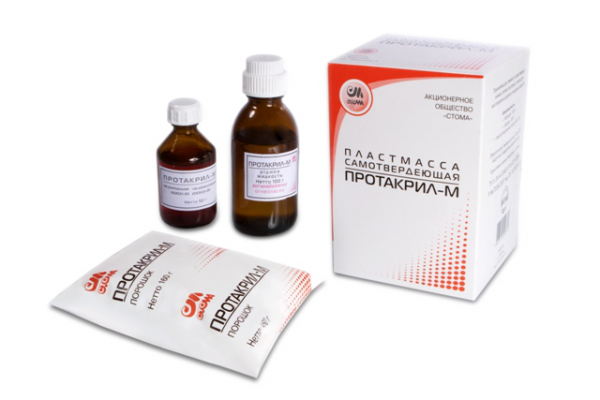
Very tasty group of materials. Can be cured at home at room temperature. Color options - from mysterious pink to transparent. Plastics produced in the CIS are best suited for our tasks. They are significantly cheaper. For example, Redont Kolir is a self-hardening plastic for the manufacture of orthodontic appliances (150 g of powder, 100 g of liquid, 3x15 g of dyes red, blue, yellow). The price is about 400 rubles.
Representatives: Protacril-M, Redont-01, Redont-02, Redont-03, Stadont, Karboplast, Acryloxide, Chromacite, Futura Zeller, Probase Cold ”,“ SR-3/60 Queen ”,“ Spectra Trey ”,“ SR-Ivolen ”,“ Protemp ”.
The rules for working with each plastic are very different - you need to refer to the manufacturer's recommendations. Remember about safety. Almost all monomers are poisonous, often have volatile fractions that are not good for health.
Work methods:
Polymerization occurs when the initiating effect of the redox system, the system "initiator-activator." The rate of polymerization depends on the amount and nature of the activator and initiator, the ambient temperature, the dispersion of the powder and the nature of the monomer. At temperatures above 30 ° C, rapid polymerization occurs, and at negative temperatures, it stops. General technology: plastic dough is prepared in glass or porcelain dishes. First pour the monomer, and then pour the powder, using the measuring tanks. The mixture is thoroughly stirred and the vessel tightly closed. In this state, the plastic dough should be aged 30 - 40 minutes. The ripened plastic dough (stage 3) is used for packaging.
The polymerization process of a cold cured polymer-monomer mixture is exothermic. After mixing the original components, the mass swells. Then comes the induction period in which the mass retains its plasticity, and its temperature has not yet increased. Later on, the polymerization period begins, and at this time the temperature quickly rises to its maximum value. After the period of polymerization, the temperature drops due to the end of the reaction and the release of heat to the environment. The resulting polymer chains are shorter than with thermal polymerization. Plastic is considered mature if a significant portion of the monomer is absorbed by polymer particles. In the phase of the stretching threads, the plastic is packed.
At first I wanted to do one article, but then I realized that the volume is too large for that. Therefore, there will be a series. Unfortunately, I am now wildly limited in time due to intensive work in the laboratory and I can not promise that I will publish an article very often. If you have questions - I will answer with pleasure.
UPD
As it turned out, Habré also has my fellow dentists. In particular, Budda40 rightly blamed me for several factual errors, for which I thank him so much. In particular, I confused in a hurry the notion of a cast / print and a model. The model is a positive display of the subject, and the cast is a negative one. Actually, you need to sleep more. In my defense, I can say that I have not been practicing for a long time. Now my main activity is gene and tissue engineering. I also list its addition to plastics:
UPD2
Plastics can be very diverse. Some are extremely beautiful, especially those designed for children. On the photo of the work of the engine9 engine :
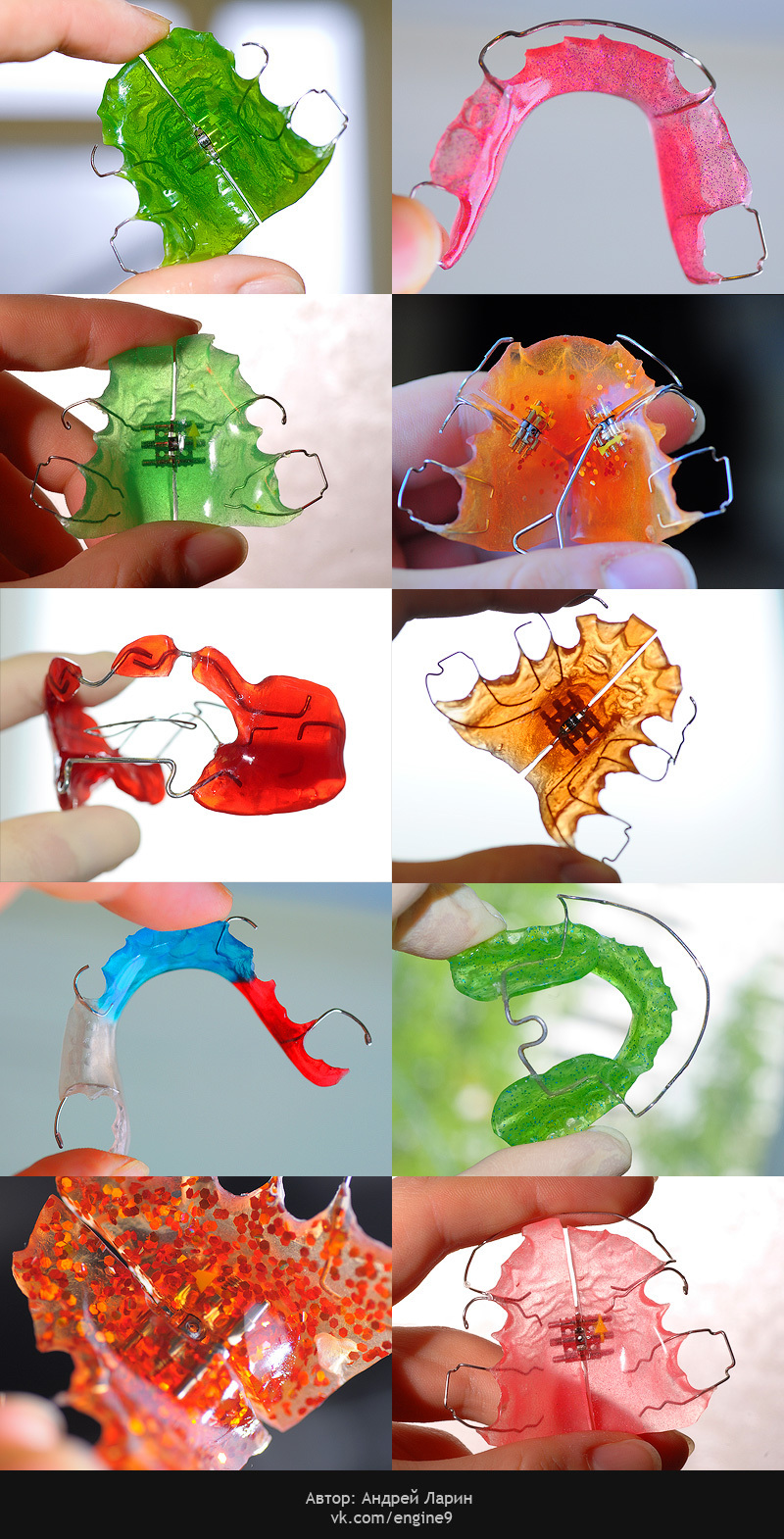

So, today we will have a little unusual DIY post. We will not do anything with our hands. Arduino and firmware in 30 lines on Brainfuck also will not. We will try to look at familiar things from an unusual angle.
All of us are accustomed to materials, classical for this area, like PCB, tin solder and other joys of those who
')
In today's program:
Materials
- Silicones. Like silicon, only more interesting.
- Supergips. Plaster of all gypsum.
- Plastics Great pink color.
In the next part:
Materials
- Photocomposites. Himself a 3D printer.
- Phosphoric acid for pickling
Equipment and tools
- Diamond and carbide burs
- Portable micromotors. Dremel replacement
- Reverse tweezers, probes and other small things
Disclaimer: I do not promote anyone's interests and all of the references to dental stores are chosen by the Korean random order for illustrative purposes.
Our goal
To begin, let's determine what materials we are interested in and how to get them.
First, the materials vary greatly in price. There are a bucket of some rubbish like Unifas-cement for 80 rubles. There are 7,000 per 2 ml of a particularly tricky adhesive. We are interested in low-budget options, although perhaps someone will find a use for more expensive things.
Secondly, the places of sale are not at all obvious. The same principle works here as in the furniture for professional furniture makers, specialized stores of ossums and the like. Such stores do not spend money on a beautiful shop window and usually nest in the city’s hives among the hundreds of Vector Plus, due to cheap rentals. A typical example in Krasnodar:

How to find a store
Immediately the question arises, how to find these camouflaged shelters with cunning materials? The answer is pretty obvious. 2GIS is our best assistant in this situation. Taking this opportunity, I want to convey a huge thank you to the staff of pilikoff , jetfreeman and the rest. Dentists themselves do not have time to follow the endless movements of these stores. Take, for example, Moscow, as one of the most relevant to the audience. The correct query is "dental materials"

It is especially convenient to do this directly from the phone, combining the search with a call for the presence of positions of interest. Now we can go directly to the materials.
Silicone and alginate masses

Dentists often take impressions. Once this was done with gypsum, which is fragile and, in principle, cannot be removed by a single piece from the oral cavity. It was then necessary to glue the imprint and several pieces. Moreover, the impression was also heated in the process of crystallization ... Also, a pleasant bonus was the ability to leave a part of the teeth directly in the impression. Today everything has changed and the main working materials for the doctor - alginate masses and C- and A-silicones.
Alginates

Alginates are good for their very low price. For example, Hydrogum Soft costs about 200 rubles for a half-kilogram package. Sold in the form of colored powder and mixed in distilled (preferably) water.
Very important! Always read the instructions carefully. The manufacturer is not in vain gives accurate proportions by weight and volume. It is also very important to maintain the time norms for kneading and forming an impression. More expensive alginates are color-cured polymerization and mixing quality. They change color depending on their condition, for example, from purple to yellow. Alginates have one big minus - they give a wild shrinkage after 2-3 hours after creating an impression. In a day you will not recognize the model. Therefore, it is necessary to cast immediately.
Dry powder of alginic acid is potentially harmful to health. Avoid spraying or inhalation.
To work with alginates you will need several things:
Rubber bulb

It should be no more than 50 rubles. It is also very convenient to mix plaster.
Putty knife

It can also be metallic.
Optional - scales or measuring spoon
Not all alginate masses put measured containers, but I highly advise not to do kneading “by eye”.
Work process:
Measure out the right amount of powder and pour it into the flask. Then add the required amount of cold water. Start stirring with a spatula. When the mass becomes homogeneous it can be applied to the surface. In the case of dentistry, this is an impression spoon for the oral cavity, in our case, you will need to come up with something depending on the goals. Finally, a little jerky video, which shows a semi-automatic mixing system.
Silicones
Much more interesting materials, but also cost significantly more. However, among them there are some low-cost representatives. A-silicones shrink less and improve relief accuracy. C-silicones are simpler, but also cheaper. Consider one of these budgetary representatives with a price in the region of 1,300 rubles - Zetaplus from Zhermack.

As you can see in the picture, the basic set consists of three components. This is the base material in a large bucket (often called Putty), flowing silicone in a tube labeled Oranwash L (also often called soft or light) and a tube of catalyst. The basic principle of working with silicones is to create two-component prints. The first layer of the impression is removed by a viscous base mass, then the second - by a corrective fluid mass, which gives a particularly accurate display of details. Consider in practice:

First, knead the base mass with the right amount of catalyst. Place our plasticine mass in the impression tray or its analog and press it to the removed part.

We are trying on a cast of something from which we remove it, most likely it will not sit down, as there are undercuts, we cut away what prevents the cast from sitting down This space will be filled with liquid silicone.

Fill liquid silicone mixed with catalyst into the processed cast and press it again to the part, carefully squeezing out the mass. Important! This blue rubbish categorically does not wash off. Liquid silicone soaks the fabric and then hardens forever with a hydrophobic stain.

We get an accurate print of the model to be removed.
From other silicones, you can also pay attention to Speedex . It is also inexpensive. In addition to the direct destination for prints, silicones can be used as sealants, as well as to create any temporary structures. I very often make of it a sealing-retaining stand for laboratory equipment. Shrinkage is not as severe as alginates. It is believed that the cast can be cast during the day with preservation of accuracy. For various kinds of temporary structures, the lifespan is almost unlimited.
Supergips and model casting

Supergips are distinguished by the usual construction alabaster of increased purity, uniform particle size and sly additives that reduce the coefficient of expansion. The strength of the final product is also higher. Prices for it from 500 rubles. Gypsum material is very capricious and the creation of high-quality models from it requires a fair amount of training.
Classification:
Class I is rare filth and is not used by normal laboratories.

Class II - in dentistry, it is mainly used for gypsum models in an occluder or articulator, and putting in a cuvette for cooking. Strength is low.

Class III - one of the most popular in dental laboratories. Almost all models of jaws flow from it for various works, with the exception of collapsible models. This dental plaster is strong enough not to break when removing the model from the cast. Universal gypsum, a kind of golden mean between price, quality and durability.
Class IV - heavy-duty gypsum, which is almost impossible to process without the use of high-speed tools. Use it for casting the working part of folding models. It is quite expensive to use it for other purposes, as it is very expensive.
Class V is an incredibly durable and practically non-shrinking plaster. The strength and other properties of gypsum is achieved through the use in the process of its manufacture of various synthetic components. The price is absolutely not human.
To obtain a plaster model, we need:
- Rubber bulb
- Supergips
- Metal spatula for mixing
Remember that in normal dental laboratories there are traps of gypsum particles in drains. In the apartment you risk clogging the sewage drainage if you drain the waste mass directly into the sink.
Gypsum is mixed strictly according to the proportions indicated by the manufacturer. It is best to weigh, then the result will be clean and predictable. First, the gypsum is poured, then the right amount of water is poured. You need to knead quickly, rubbing the lumps on the walls of the flask until a perfectly homogeneous mass. Vacuum mixers at home will be too expensive, although they give the perfect result. Pour the resulting creamy mass onto the impression, trying to avoid the presence of air bubbles. The use of a vibration table for accurate spilling of all parts will be correct. If there is no possibility to influence by vibration - tap the impression on the edge of the table during the casting process. Each bubble will give a cavern on the final model.
Possible applications are prototyping, creating copies of prototypes, preparing molds for future casting from plastic, metal and other materials.
Cold Polymer Plastics

Very tasty group of materials. Can be cured at home at room temperature. Color options - from mysterious pink to transparent. Plastics produced in the CIS are best suited for our tasks. They are significantly cheaper. For example, Redont Kolir is a self-hardening plastic for the manufacture of orthodontic appliances (150 g of powder, 100 g of liquid, 3x15 g of dyes red, blue, yellow). The price is about 400 rubles.
Representatives: Protacril-M, Redont-01, Redont-02, Redont-03, Stadont, Karboplast, Acryloxide, Chromacite, Futura Zeller, Probase Cold ”,“ SR-3/60 Queen ”,“ Spectra Trey ”,“ SR-Ivolen ”,“ Protemp ”.
The rules for working with each plastic are very different - you need to refer to the manufacturer's recommendations. Remember about safety. Almost all monomers are poisonous, often have volatile fractions that are not good for health.
Work methods:
Polymerization occurs when the initiating effect of the redox system, the system "initiator-activator." The rate of polymerization depends on the amount and nature of the activator and initiator, the ambient temperature, the dispersion of the powder and the nature of the monomer. At temperatures above 30 ° C, rapid polymerization occurs, and at negative temperatures, it stops. General technology: plastic dough is prepared in glass or porcelain dishes. First pour the monomer, and then pour the powder, using the measuring tanks. The mixture is thoroughly stirred and the vessel tightly closed. In this state, the plastic dough should be aged 30 - 40 minutes. The ripened plastic dough (stage 3) is used for packaging.
The polymerization process of a cold cured polymer-monomer mixture is exothermic. After mixing the original components, the mass swells. Then comes the induction period in which the mass retains its plasticity, and its temperature has not yet increased. Later on, the polymerization period begins, and at this time the temperature quickly rises to its maximum value. After the period of polymerization, the temperature drops due to the end of the reaction and the release of heat to the environment. The resulting polymer chains are shorter than with thermal polymerization. Plastic is considered mature if a significant portion of the monomer is absorbed by polymer particles. In the phase of the stretching threads, the plastic is packed.
Instead of an epilogue
At first I wanted to do one article, but then I realized that the volume is too large for that. Therefore, there will be a series. Unfortunately, I am now wildly limited in time due to intensive work in the laboratory and I can not promise that I will publish an article very often. If you have questions - I will answer with pleasure.
UPD
As it turned out, Habré also has my fellow dentists. In particular, Budda40 rightly blamed me for several factual errors, for which I thank him so much. In particular, I confused in a hurry the notion of a cast / print and a model. The model is a positive display of the subject, and the cast is a negative one. Actually, you need to sleep more. In my defense, I can say that I have not been practicing for a long time. Now my main activity is gene and tissue engineering. I also list its addition to plastics:
I want to add the cold polymerization plastics in this paragraph, since now the trade in this class of materials has become quite haemorrhagic since last year, since the liquid for polymerization contains the methylacrylate precursors of methamphetamine. Now it is sold on presentation of a passport, and storage requires a safe and documentation, in general, you should not buy them, although plastics without precursors have recently appeared, such as Rebase II from Tokuyama Dental.
UPD2
Plastics can be very diverse. Some are extremely beautiful, especially those designed for children. On the photo of the work of the engine9 engine :

Source: https://habr.com/ru/post/232593/
All Articles